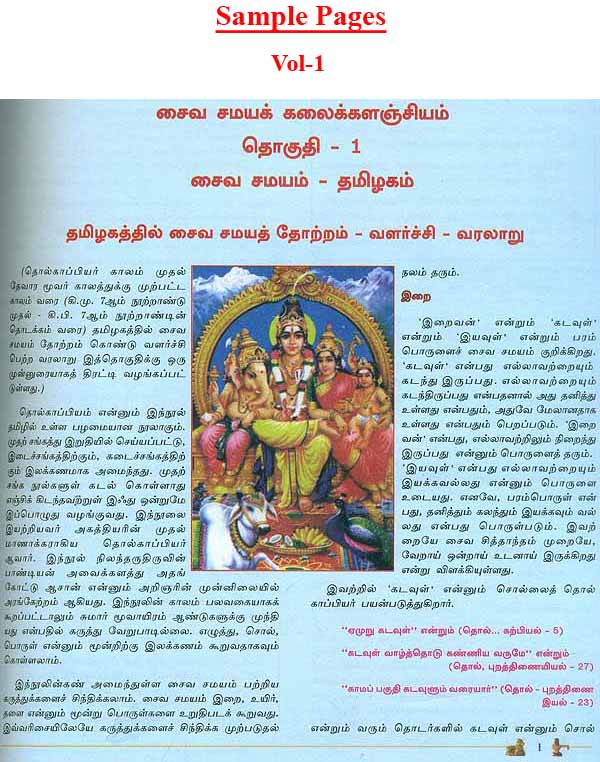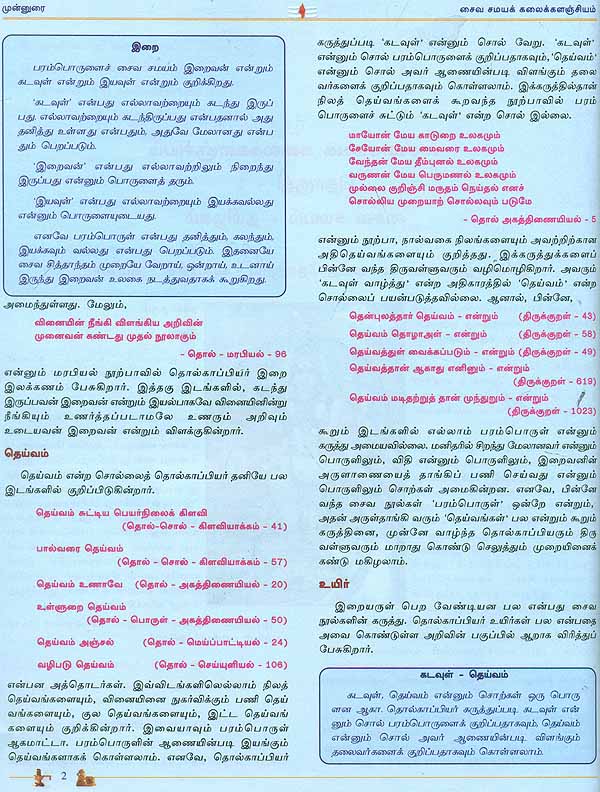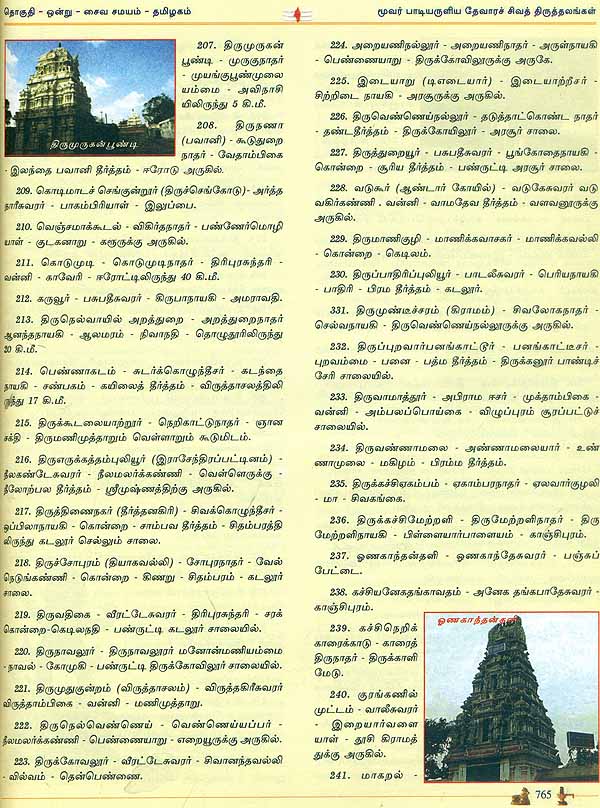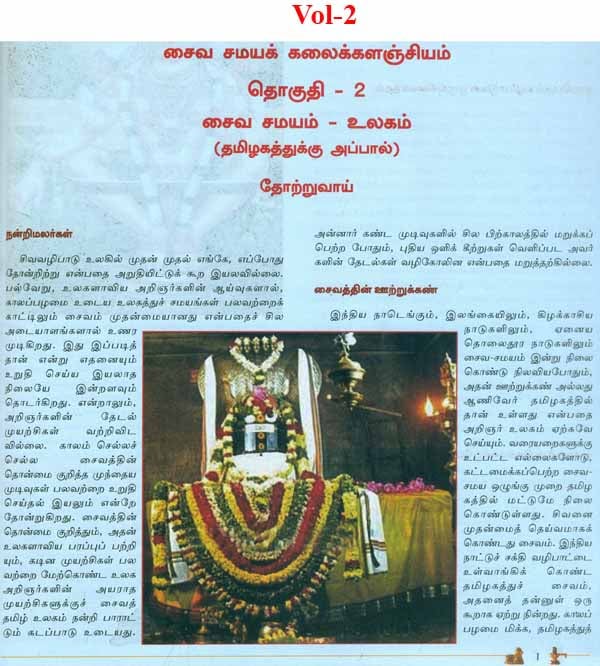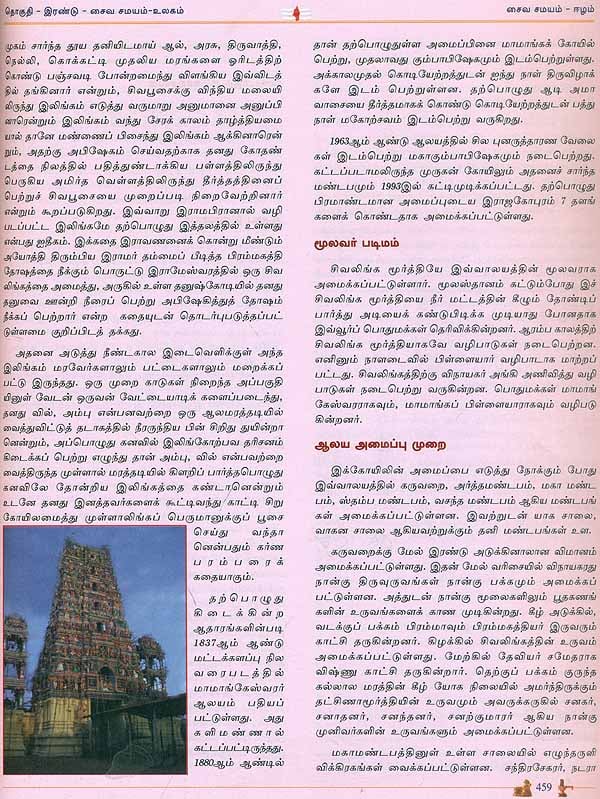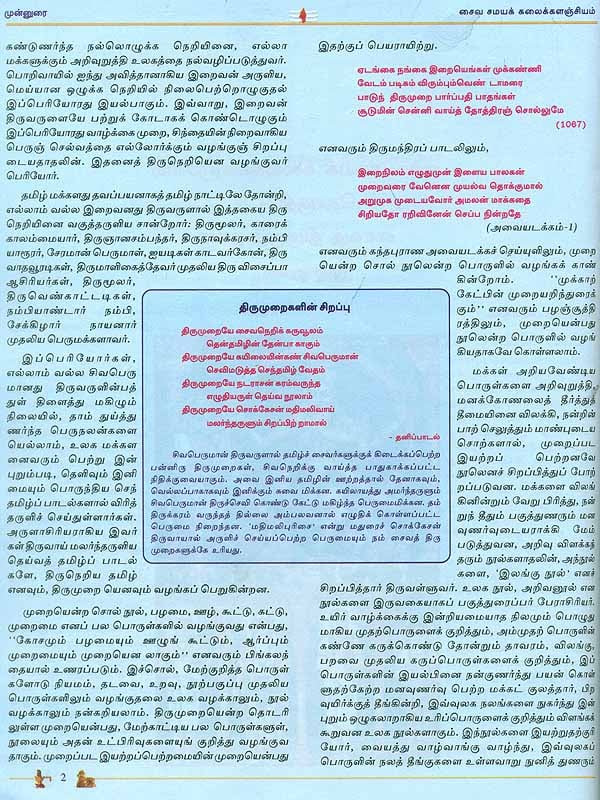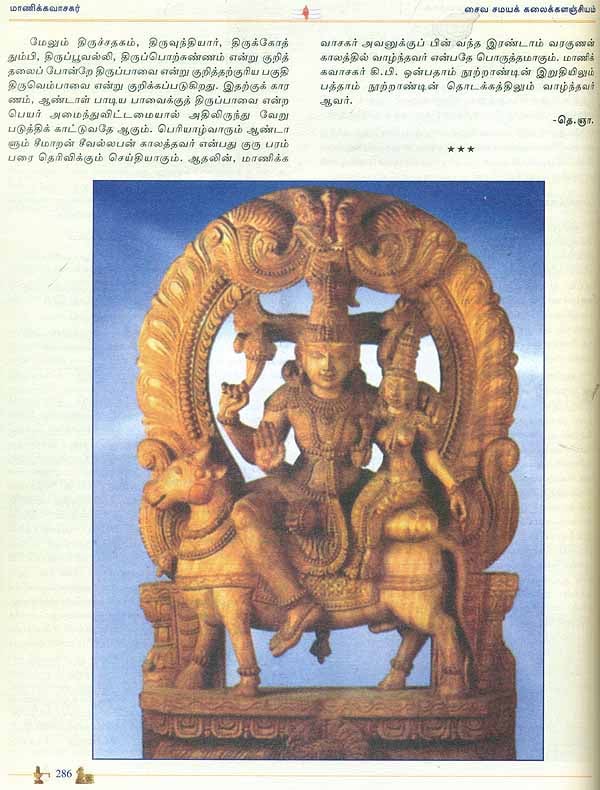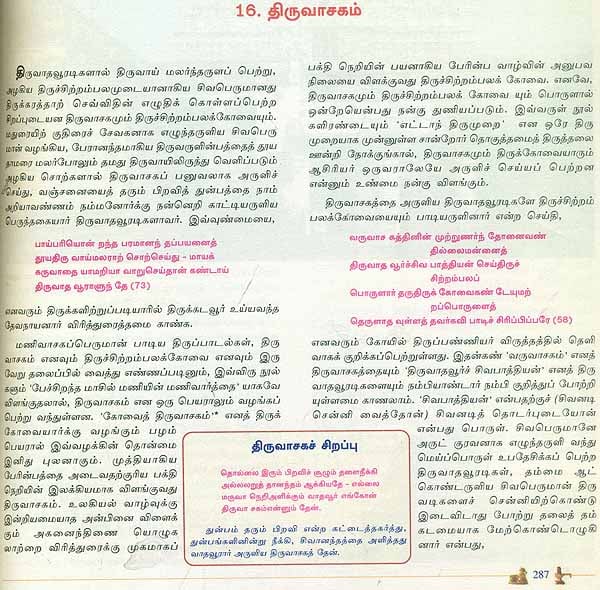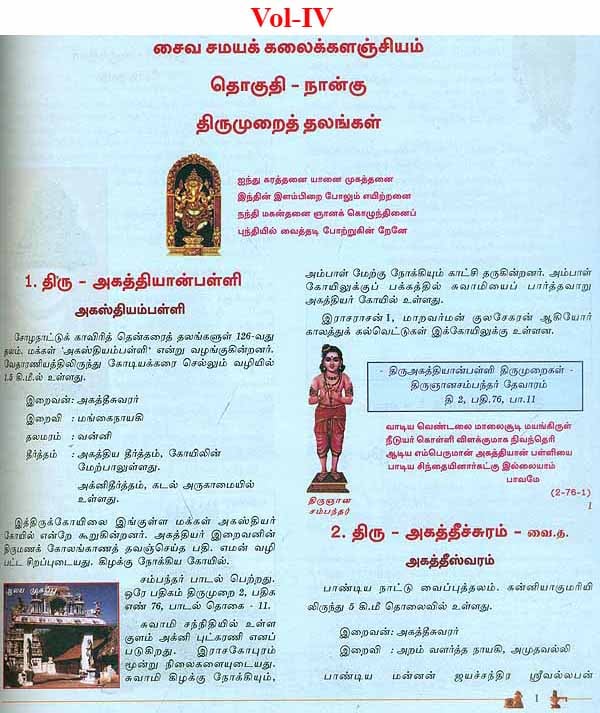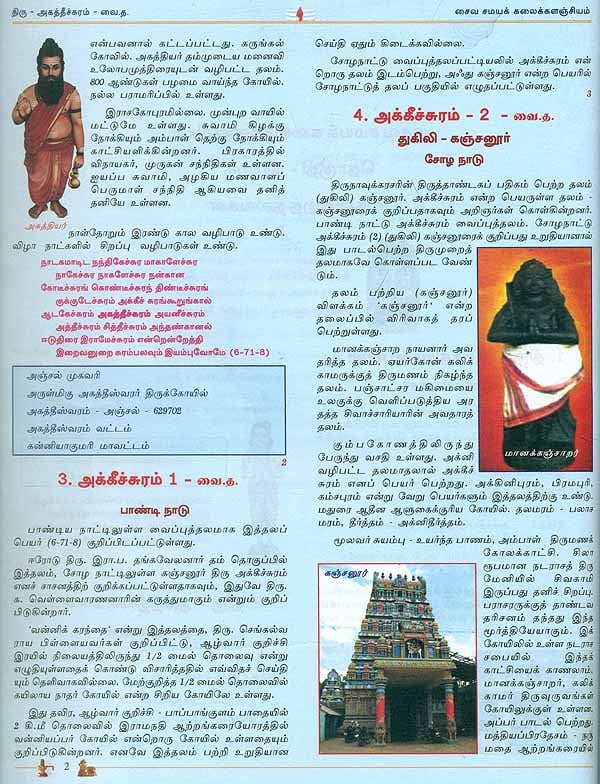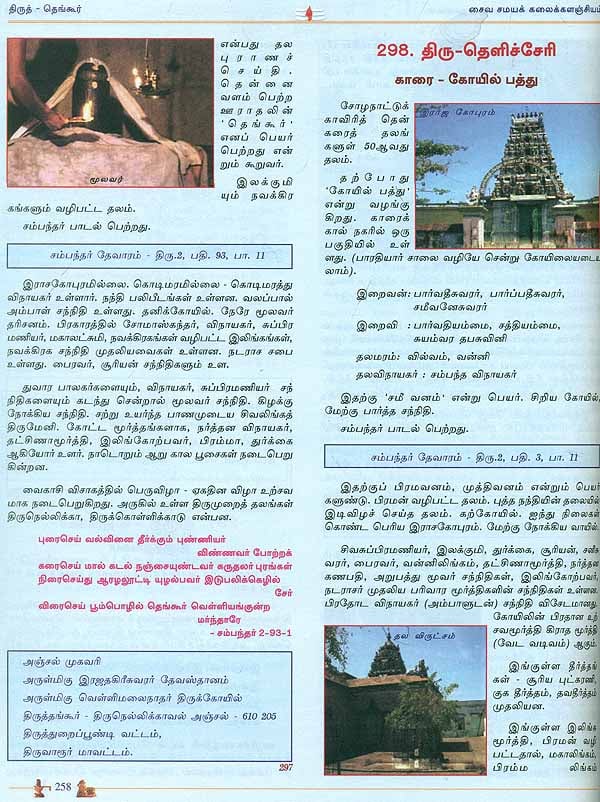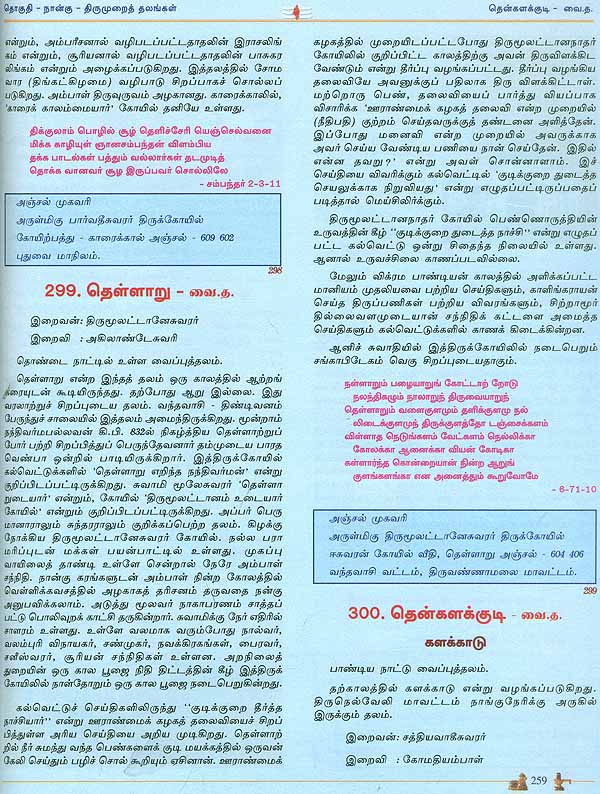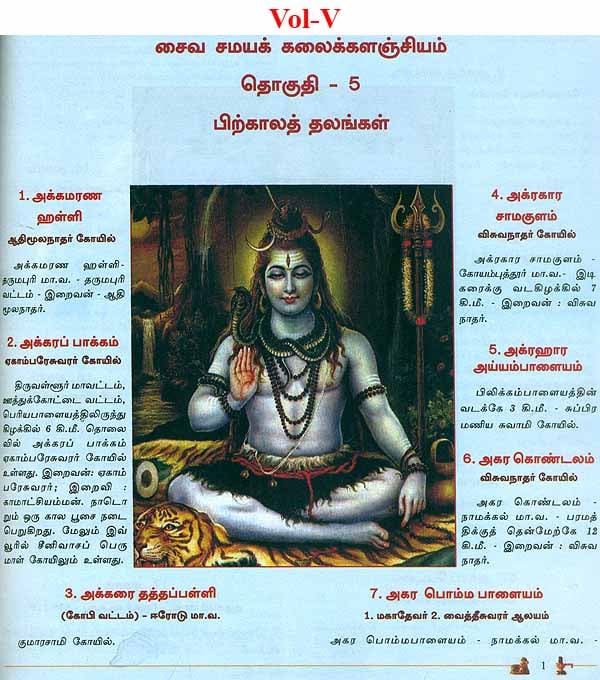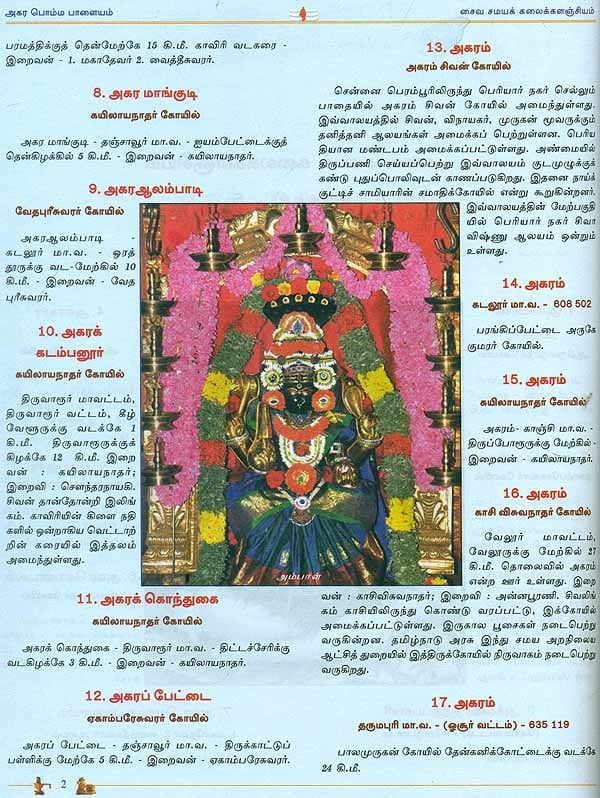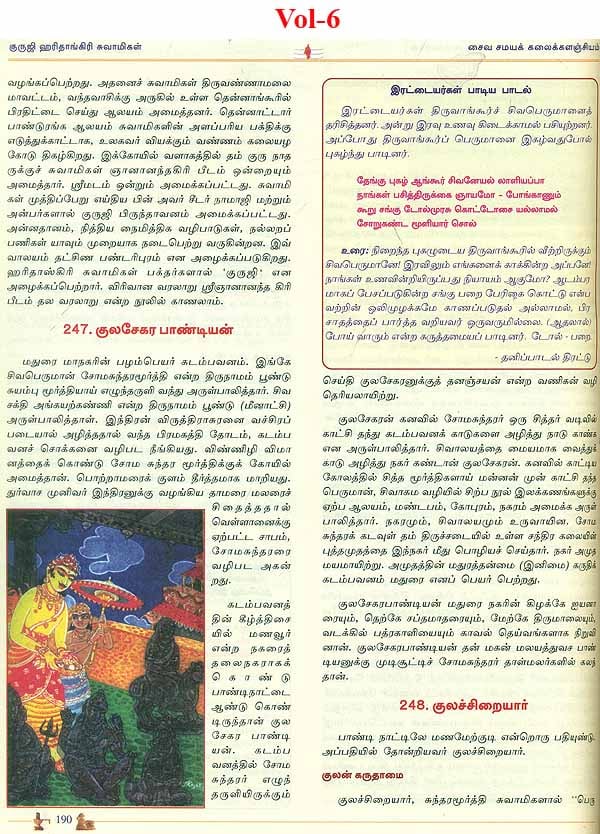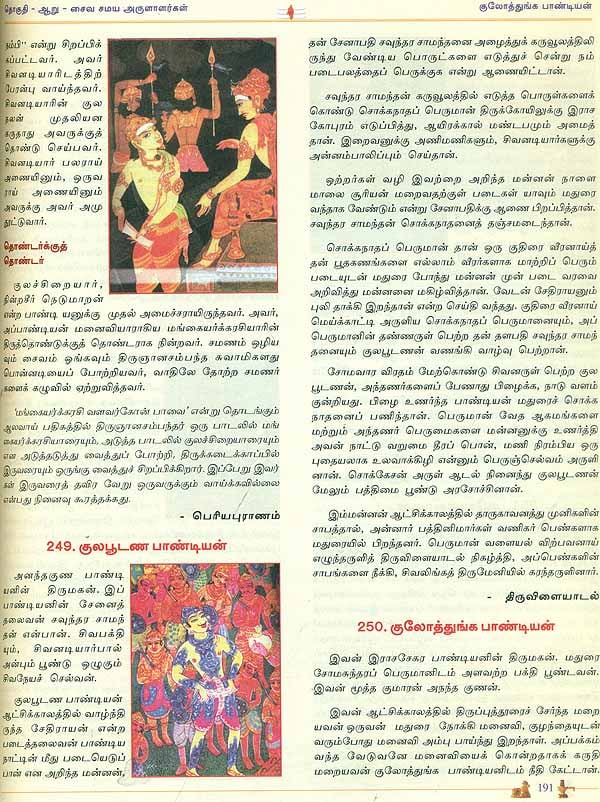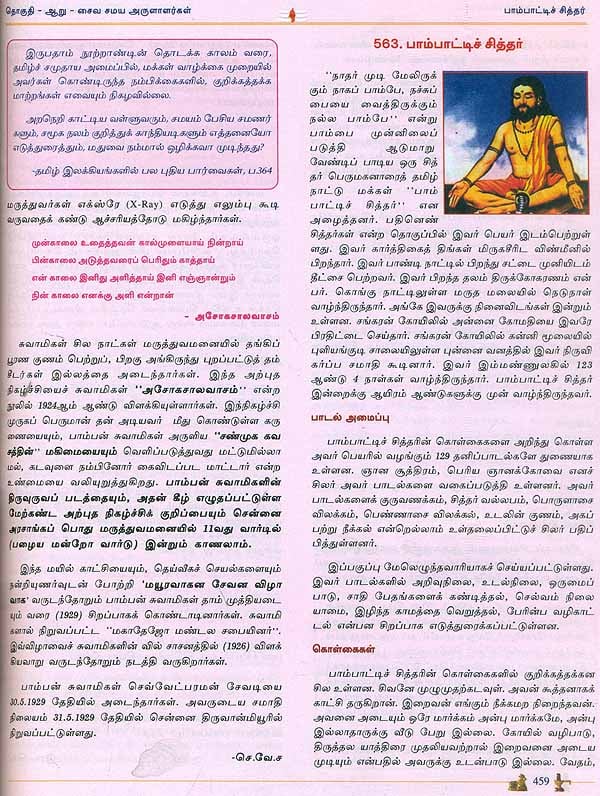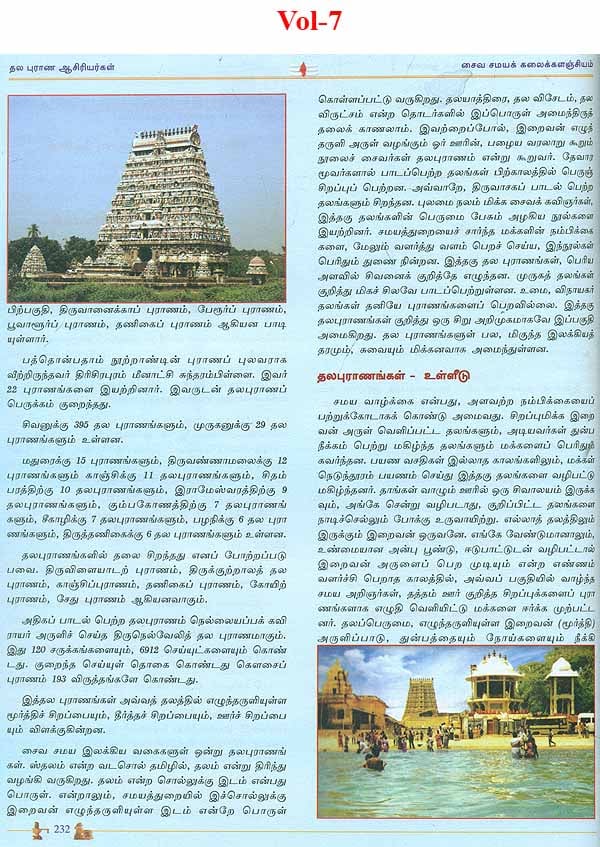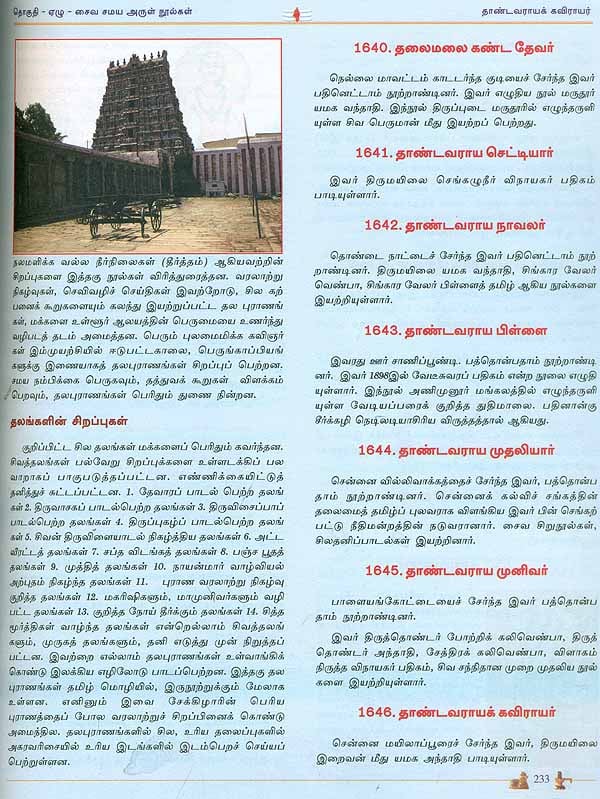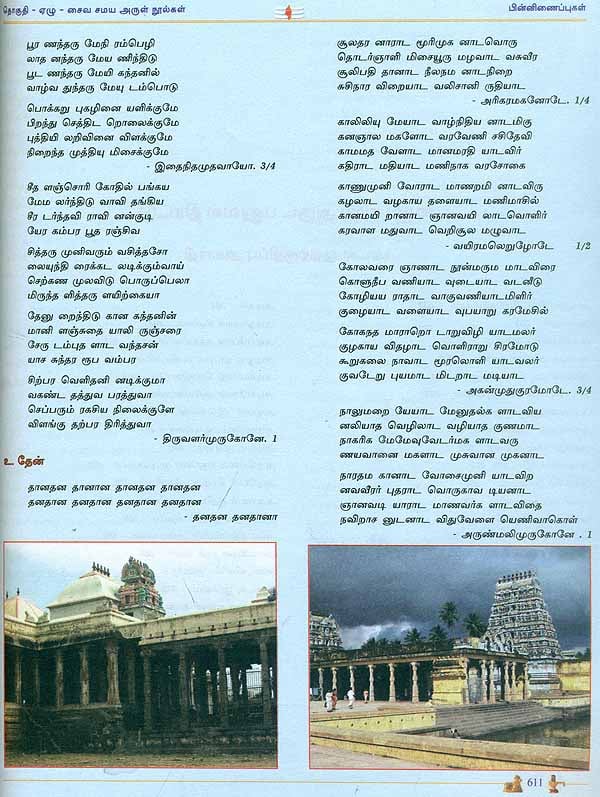
Saiva Encyclopaedia in Tamil (Set of 10 Volumes)
Book Specification
| Item Code: | NZL714 |
| Author: | Prof. Dr. R. Selvaganapathy |
| Publisher: | Saint Sekkizhaar Human Resource Development Charitable Trust |
| Language: | Tamil |
| Edition: | 2013 |
| Pages: | 7032 (Throughout Color and B/W Illustrations) |
| Cover: | Hardcover |
| Other Details | 11.0 inch X 8.5 inch |
| Weight | 17.30 kg |
Book Description
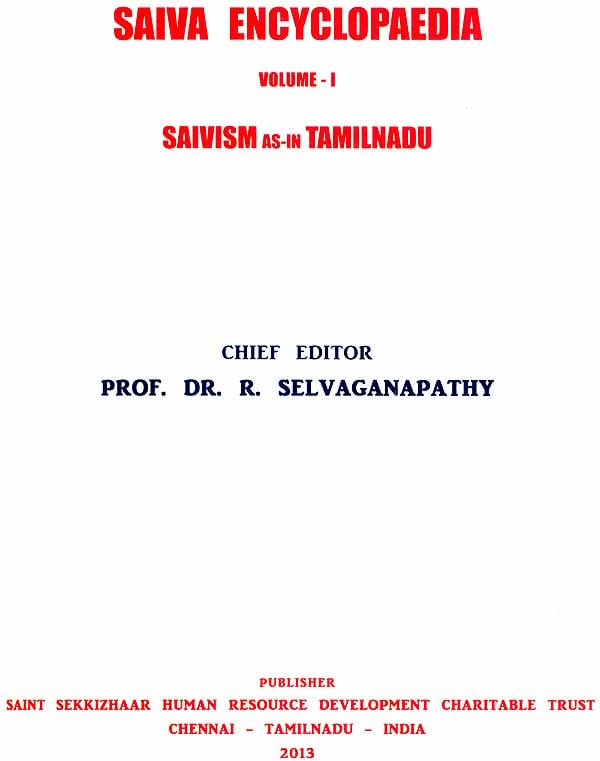
The ten volume Encyclopaedia on Saiva religion is a mammoth work of a gargantuan nature bringing under its canopy practically every facet and aspect relating to the religion. This compendium is perhaps the first of its kind to be brought out in the twenty first century by a galaxy of 190 eminent scholars with Senthamizh Varidhi, Sivagnanakalanidhi, Kalaimamani, Dr. R. Selvaganapathy as the Chief Editor.
An attempt to encompass such a wide range of facts relating to Saiva religion which has a history of thousands of years, should be considered not only bold but also ambitious. It is only the abundant Grace of the Almighty that has enabled the Chief Editor and his learned team of contributors achieve this feat. The hard work put in by the team over the past six years has resulted in bringing out material relating to every minute aspect of Saivism which is highly readable, and is capable of giving a clear insight to the common man about many matters which he always wanted to get clarified in an authentic and unambiguous manner but had no organised reference point under one comprehensive book.
In a work of this kind, the information sought to be provided has necessarily to be arranged in a proper order under appropriate headings and volumes. This has called for considerable effort on the part of the Editor to avoid repetition and at the same time ensure that there is atleast a passing reference to a particular item, which might get more elaborately discussed in another place, under an appropriate head in the same or a different volume.
To start with, the origin, growth and historical background of Saivism in Tamil Nadu are discussed in the first volume. References to Saivam, Sivan, Umai, Murugan, Ganapathy in religious literature through the centuries, celebration of festivals, different ways of worship, various manifestations of Sivan etc. are dealt with exhaustively. Many minute details on matters concerning the above, have been brought out in such a way that the reader would be eager to get even more elaborate information by referring to other volumes or reference material cited.
The Siva cult that is widely prevalent in the Southern States of Kerala, Karnataka and Andhra Pradesh and upcountry States in the Northern parts of India finds detailed mention in the Second Volume. Transcending the boundaries of India, the spread and practise of Saivaism in the Far East, Srilanka, Nepal and the temples and institutions established in the Western world by Hindus settled therein, have been recorded by getting authentic and updated write- ups contributed by scholars and devotees who are resident in the respective countries. The Chief Editor has networked with such persons and institutions during his visits abroad by maintaining contacts with them continuously through correspondence and e-mail. The Second Volume contains further information on publications, temples, holymen and their bio-graphies countrywise, with appropriate notings in English keeping focus on the evolution and growth of Saivism.
Devotional literature has a very special place in the Saiva religion. The Third Volume is devoted exclusively to furnish the reader, elaborate information on the Thirumurais which are magnificent devotional poems by great saints and Godmen for whom emancipation of the soul in its search for the Supreme Divine Being - Sivan was in focus all through their lives.
Comprising of twelve Thirumurais, the Saiva Canon is close to the heart of every devotee of Sivan. Twenty seven prophets and practitioners of love of God, have contributed these divine outpourings and the systematic way these are rendered in specially set music by oduvars - holy singers in temples is vividly brought out in this Third volume. The arrangement of the devotional songs, the style of rendering the songs, the way it has been set to music, the evolution of a tradition in this regard and the adherence to the tradition even today, have been graphically described since these divine outpourings are the vedas and mantras- the recitation of which is capable of taking the faithful to a higher plane of spirituality and share in some measure, the ecstasy that the divine authors experienced while praying for the Grace of Siva. The high literary merits and the wonders that the Thirumurais worked to alleviate the pain and sufferings of people have been vividly brought about. Temples elevate the spirit and thoughts of human beings. In particular, the temples sanctified by the visits of the blessed men of God and the devotional outpourings during their worship enhances the faith and divinity that the followers of the Saiva religion will swear by. The Fourth Volume, not only contains details of the temples and the Laureates of Bhakthi who have worshipped at these and sung in praise of the Lord, but provides a compendium of information on their location, their special features, the inscriptions found therein, the grouping of these as per traditions and the current names popularly used by the local people to identify these abodes of the Lord.
While the earlier volume covered the 487 ancient temples sanctified by the visits and divine poetry of the Nayanmars and a few other temples sung by Saint Arunagirinathar, the fifth volume covers mostly temples of the later period numbering 4102. A few of these have been flourishing even before the Thevara Moovar. But the largest number were constructed during the post Thevaram Era.
Though there are over thirty thousand temples of the later period, only a select number has been included, keeping in view such parameters as popularly frequented by devotees, sanctified by devotional songs of great spiritual and saivaite scholars, miracles attributed to the presiding deities, unique features in art and architecture etc. __ The great servitors of Lord Siva who were immersed in the divine ocean of His Grace and longed to be in the company of His devotees seeking His bliss are enumerated in detail in the Sixth Volume. The authors of the Thirumurais, the Nayanmars, those who were privileged to be specially blessed by Sivan, Uma and Murugan, Heads of religious Mutts and the spiritual gurus of various Holy orders in Saiva pantheon, those who rendered service in temples with great faith, fervour and devotion, those who involved themselves in the renovation and upkeep of temples as a religious duty and those who propagated the gospel of Saivism as a mission of their lives have been included in this volume with appropriate mention of their contribution to the growth and glory of Saiva relgion.
In short, the sixth volume is a hagiography of saivite saints, servitors, holy gurus and disciples of the various Saiva Mutts, spiritual leaders and scholars who logically established the greatness and glory of Saivism. Having enumerated the divine poesy of the twelve Thirumurais in the third volume, the Chief Editor has devoted the Seventh Volume to the astounding and vast religious literature of the later era. The strikingly beautiful puranams, prabhandhams, divine poetry and exquisite verses which add upto several thousands of poems, find a mention in this volume. Nearly ten thousand works find a place in this volume with the names and brief biography of authors and a mention of the contents of each work.
Any compendium on Saiva religion has to have a more than ordinary mention of Saiva Siddhantham. The Chief Editor has devoted the entire Eighth Volume to expatiate on Saiva Siddhantham with twenty renowned scholars on the subject giving their inputs. The cardinal tenets of Saiva Siddhantha System are found not only in the earliest extant works in Tamil- Tholkappiam and Thirukkural, but also in every other masterpiece in Tamilliterature.
After Sangam age, the philosophy found rich and beautiful expression in Thiruvasagam of Saint Manickavasagar, unsurpassed for its grandeur and spiritual experience. Later came, the hymns of Saiva Saints to be followed by the rich devotional literature of Thevaram trio .
.. Saint Meykandar, in his Sivagnana Botham put in a nut- shell, a systematic expression of the system for the first time in the thirteenth century. In the thirteenth and fourteenth centuries, fourteen philosophical works known as standard Saiva Siddhantha Sastras came up. Dr. G.U. Pope who was a keen student of Tamil noted ''The Saiva Siddhantha System is the choicest product of the Dravidian intellect." The works of other great scholars, commentators and commentaries have also been elaborately dealt with. The contributions of the saints who adorned the Saiva Mutts have substantially added to the literature and discussions on Saiva Siddhantha. These have been included with appropriate notings in the Eighth Volume.
Many institutions, associations and organisations have been founded over the centuries to promote and facilitate the spread of Saivam. Eighteen Saiva Mutts and other institutions established over the past five hundred years have been discussed and their invaluable contribution to the growth of the religion has been recorded in the Ninth Volume.
Unobtrusively and quietly, but with great faith and determination propelled by genuine desire to serve the cause of Saiva religion and propagate the Saiva Siddhantha Philosophy in countries far and wide, many individuals, families and organisations have built Siva temples, made arrangements for rendering Thirumurai hymns by Oduvars, established schools and study centres for spreading Saivism. These facts have been gathered and presented Continent- wise in the Ninth Volume. Networking of these, using information and communication technology, has been undertaken and sharing of information and experience has been facilitated.
Wealth of information on the status of Saivism abroad particularly beyond the borders of India, has been incorporated under proper headings to facilitate interaction between individuals and institutions working for the common cause of promoting and enriching the Saiva religion true to the dictum of Saint Manickavasagar "God Siva owns the Southern land and He is the Lord of all realms".
The Tenth Volume entitled "Thorana Vayil" (Decorated Gateway) is designed to contain the alphabetical index of the nearly 26,000 entries with indications of the number of the Volume and page therein. A brief profile of each of the 190 contributors to the Encyclopaedia, a comparative study of world religions and Saiva Siddhantham through forty five essays form a part of the Tenth Volume.
